Jim Mortimer – SAFM 35 year reunion Part 1
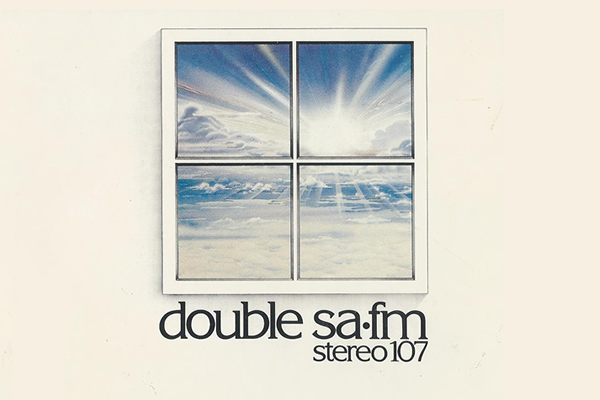
In September last year, a collection of some of the finest people and Australian radio minds celebrated the 35 year anniversary of SAFM as reported on Radio Today here
From all reports, the stories, the friendships, the crazy and creative antics, and the SAFM radio history flowed that night in September … as it respectfully should have.
One story to emerge out of the evening was that a very clever and methodical production man had spent the best part of 2 decades collaborating air-checks and audio memorabilia and had painstakingly sorted through the boxes of archive tapes to produce a 3 part audio history of the station.
As many of us did, Jim Mortimer had ‘radio’ flowing through his veins at a very early age. His love and passion for it has seen him not only create a career within radio, but excel to become one of the most respected audio and radio professionals in Australia.
When Jim shared his SAFM audio archive presentations with me it clearly became apparent that his story, and this special SAFM archive audio be shared with more than the 150 people at that 35 year reunion.
The audio Jim has collated and mixed will be shared over the next few weeks in a series of articles, and for those of us that have been around this great industry for a while, you will hear some of the amazing voices, promos and on air banter that ignited FM radio in Australia to become the Innovator, not the Imitator.
I started my conversation with Jim asking him to share some details about how his passion for radio began.
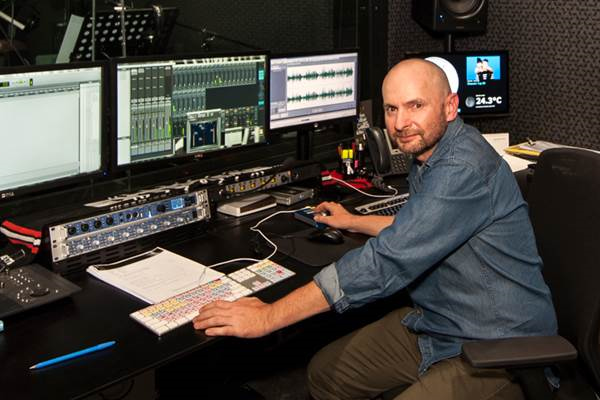
Jim M: I was born and raised in Adelaide, and even as a primary school kid in the late 1970s, without really knowing why, I was drawn to the innovative radio which Paul Thompson was creating at 5KA. Maybe it was because my older siblings were into music and respected what 5KA were doing.
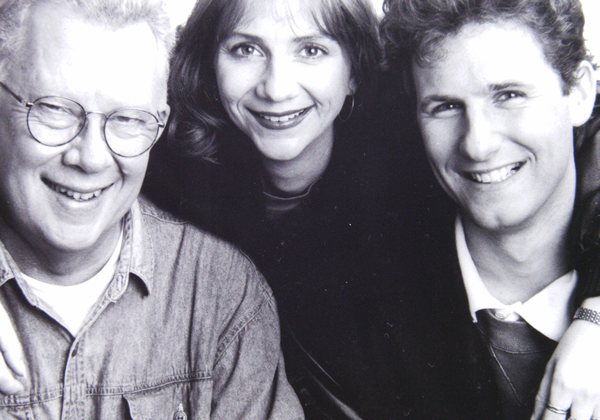
5KA had an amazing stable of announcers, some of who went to SAFM when it launched years later. But you could tell that 5KA cared about the music. The young PD Paul Thompson basically threw out the rule book, focussing heavily on Australian music but also progressive album rock – on an AM station, ironically owned by the Methodist Church. Announcers like David Day, John Vincent, John Dean, Dave D Whitcomb, Barry Bissell, made 5KA iconic. The audience loved it, and while the kids my age were mostly listening to pop on 5AD, my older siblings and ‘cool’ people were all plugged into Paul Thompson’s 5KA. Paul hired communicators who understood their audience and the music culture. They were Australian – not yankee styled copies, these guys had an Aussie drawl and local irreverent humour. Even the station IDs were a bit ocker – the grunty voice just said ‘Foive Koy Oiy’. And Adelaide was used as a test market for new music by record companies. 5KA would play it and the rest of the nation would see how it went here before picking it up. For years it had the ballsy logo of ‘The Australian Rock Station’.
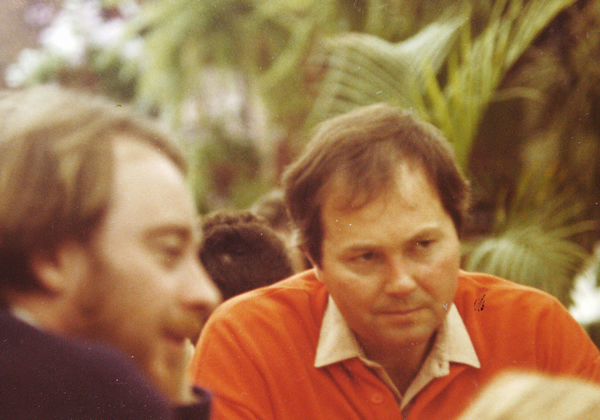
But In the late 70s Paul Thompson left Adelaide for Sydney. 5AD’s Bazz and Pilko began their record breaking ascent on breakfast and 5KA lost its rock and roll identity. With 5AD smashing the competition, there was no room for innovation and Adelaide radio became a little bit predictable.
The stage was set for the launch of commercial FM in Adelaide.
I was 15 years old doing year 11 at school when Paul Thompson returned to Adelaide. 5 Double SA FM aired at 4pm on a Friday afternoon during the September school holidays, and even before they officially launched, for about a month my school mates were cranking out their test programs in the school common room. The name Double SA played on the fact that in stereo, SA would hear double the music. ‘Hear the music for the first time’. I was captured by the sound and became a fan of the station, and began to record and archive key moments in the station’s development. I guess I was starting to experiment with editing cassette to cassette, maybe it was my first dabble in production.
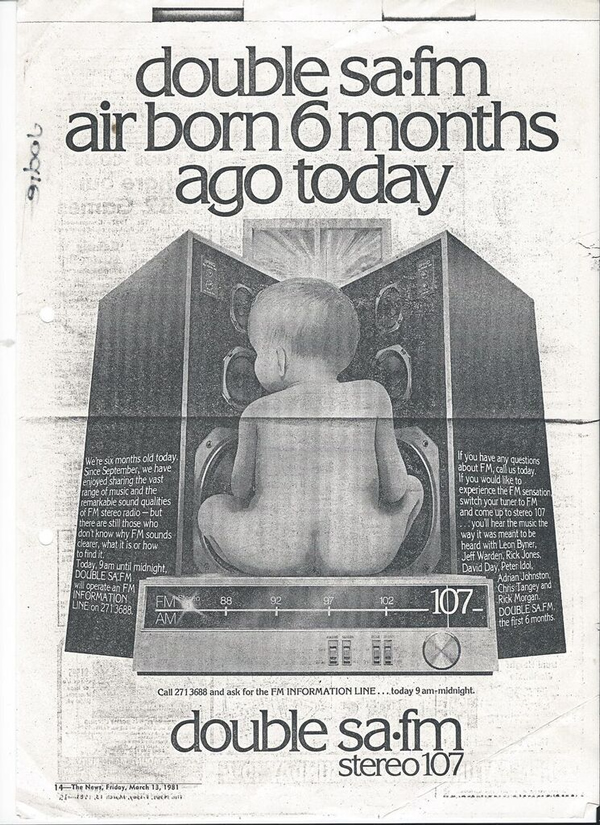
In 1980 5AD was rating through the roof and heavily all things to all people, 40+ percent of the breakfast audience, pop daytime but dayparted to keep the hit audience at night. They were a very slick operation. With lots of support from their print parent The Advertiser, and a lot of love coming from ADS Channel 7, 5AD was cashed up and not going to let this shiny newcomer get a foothold. So the pundits said that the only audience for FM and album oriented rock in Adelaide was uneconomic. Paul Thompson was laughed at when he said Double SAFM would be number one in the market within 5 years of launching. Actually he was right, they did it within 4 years, and were the first FM station to go top in their market in Australia.
After finishing year 12 in 1981 I decided to do journalism with an eye to get into radio, but the course I wanted was full so I went fruitpicking in the Adelaide Hills and saved the cash to do the 1982 5KA School Of Broadcasting. During my farm work I always had a radio hanging from a nearby tree, listening to John Vincent, and across the workday Jeff Warden and Ric Jones on Double SA FM. I was hooked.
It was weird doing the radio school at 5KA. Although I still loved the station, it wasn’t the innovator I’d grown up with – FM had taken that role. In mid 1982 Double SAFM just dropped the ‘double’ and the name SAFM was adopted, with growing impact. And KA was struggling financially, it was sad. But those KA studios in Franklin Street were hallowed radio ground. And in Dec 1982 when 5KA snatched Bazz and Pilko from 5AD, the place suddenly felt livelier when we went in for our weekly lessons.
One night in February 1983 we were due to have a radio school course lecture, but the city was gripped by the unfolding Ash Wednesday bushfires. At 7pm we students sat waiting for our lecturer, but I guess due to the road closures he didn’t show up. After a while I decided to go for a corridor walk a couple of doors down from our lecture room. In the 5KA newsroom the journos were feverishly typing, two way radios and scanners were blaring, voices were very stressed. I’d been following this story as it developed and knew some of the hills areas affected. Watching all these professionals and as an unknown 18 year old I sheepishly asked if there was anything I could do. Denis Morgan, news editor told me to grab a seat, put on headphones and write down everything that came on the police scanner. Soon I was passing on grim updates of fire victims bodies found in Yarrabee Road, Greenhill only 10k or so from the city. A very long and sad night, but it turned out to be an insight into the journalism world I’d been considering. The news team didn’t forget the help I’d given and within a week I was phoned and offered a job as ‘Station Gopher’. This position was an even more junior posting than the cart boy! The gopher would do errands, wash the execs’ cars, fill and clean the stations large water feature/fish pond, assist with carting when it got busy, and actually make tape cartridges using a machine from the stone age.
So my radio career was off and running. During this period I was still archiving bits of SAFM (and also keeping 5KA audio moments). I still felt that SAFM under Paul Thompson’s leadership was the benchmark for the complete radio ‘vision’. They were listener driven, smart and innovative. A lot of what 5KA did was reactive, obviously we were feeling the pinch of FM but we managed at times to be very competitive. There was also a bit of staff movement between the stations and so at 5KA I was lucky to work with some top broadcasters who had already achieved much at SAFM. Ex SAFM Announcers John Dean, Ric Jones, as well as David Kestles in production. Many of those guys gave me great insights into the philosophies behind SAFM’s growing dominance. My production skills were coming along too.
Radio surveys were only 3-4 times a year then, and the survey parties were an event. I started to crash the SAFM parties and met Paul Thompson.
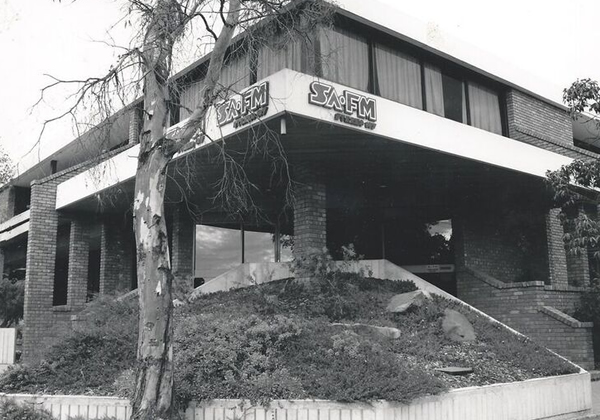
In 1984 SAFM cracked number one. They really deserved it, but it scared the crap out of our KA management. As a result, in 1985 the decision was made to take on SAFM with an ‘All hits 5KA’ format. Within a few months 5KA got to 23.3% all people – only 1.2% behind SAFM on 24.5%. It was a real scare for SAFM. But they were too smart, and the now developing Austereo Network had many resources. 5KA, owned by the Adelaide Central Methodist Mission couldn’t compete with cash and couldn’t compete on AM, and SAFM started to pull away. Then 5KA was sold and the new owners 3KZ decided to go to a hits and memories format. Simply because that was what was working for them in Melbourne.
It was all too sad to see KA being pulled in another direction; I was getting sick of them shooting themselves in the foot. SAFM was brilliant, I would have loved to work there, but I knew I had to broaden my skills by working in another market. I also wanted to see Australia and have a break from radio.
Just before departing 5KA I did something that would probably normally be a sackable offence. I programmed an hour of music on SAFM! Bill Page, SAFM Music Director hosted an album and new music show on Sundays 8 till midnight. He would invite listeners to submit a list of about 15 songs which suited the eclectic and non-mainstream theme of his show, to be played at 11pm. I had long admired Bill’s musical direction, he had also programmed 5KA and was a real music guru. So I sent in my list, letting Bill know not to make mention of where I worked. I was chuffed to have my hour of music on SAFM when it played. I’ve still got a copy of that hour…
Now, 11pm Sunday isn’t exactly prime time, but I had still been more than a little bit cheeky and indulgent. The following day I got up the courage to tell our 5KA PD Ed Breslin. Ed looked at the list of tracks and patted me on the back with a cheeky grin. “Geez mate, I can’t wait to see the survey figures. I reckon you might have given KA a few extra listeners with SAFM playing the pile of obscure crap you selected”.
Anyway, it was probably time to leave. So in 1987 I resigned from 5KA and drove up the east coast, checking out this amazing country.
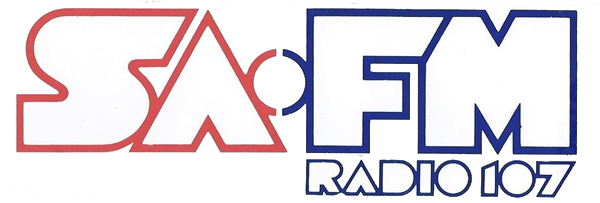
SAFM figures from here on were record breaking. KA’s new softer format took them from 17% down to 13, 12 and eventually 10%. With consistency and the youth audience all to themselves, SAFM soared to 29% in late 1987. In survey 4 1988, SAFM registered the highest ever capital city rating figure in Australian radio history – 36.6%.
After a short holiday and having gone half way around the country, in late 1987 I took on what I thought would be a ‘temporary’ gig doing production at 4CA in Cairns. The station was part of the AWA radio group and very staid. The production and tone of everything was 40+. I didn’t really think the place was right for me. But 4CA was a great training ground, in a growing regional city. I soon met a group of innovative radio thinkers including Chris Lee (aka Chris LeMessiurer), David Burton, and later the amazing Paul Amos. Twice a year I returned to Adelaide, air checked what SAFM and the other stations were doing, and we’d start emulating many of the successful concepts in FNQ.
Many, many top talent came through the Cairns market in those days; Mitch Braund, Craig Weston, Gavin Miller, Al Dobie, Brad Storey, Rob Doorey, Kelly Higgins-Devine and even Kyle Sandilands on breakfast for a while (sounding very different to now). Nationally famous Journalists Caitlin Shea (Australian Story producer) Jemima Hickman (Nova Network), Kim Landers (ABC News 24 and radio) and Kieran Gilbert (Sky TV News) all worked in our Cairns newsroom through cyclones, floods and trying times. Production stars who were part of our Cairns team included Mark Del Villar, Matt Bodman and Mark Hales.
I’d made many contacts at Austereo and was involved in sharing production trends and training newcomers who ended up at Austereo. The Hot FM network was launched in 1993, and I was given a six figure sum to build a new production studio. 4CA was cashed up and bought the second Waveframe digital audio editor for radio in Australia – Fox FM had the first. The Hot FM Cairns launch piece and a lot of the packaging I made was used to launch all of the Hot FM’s in WA (a few frequency retags done there) and places like Mackay, MT Isa, Central QLD. I really was part of the roll-out of a new network, and that Hot FM brand, it was great fun.
So I was lucky enough to be living in FNQ but working at the cutting edge of new technology. And I was still a huge fan of what SAFM / Austereo had built.
In my final year at 4CA & Hot FM Cairns, our stations were bought by DMG Radio and I was finally actually working for the great Paul Thompson.
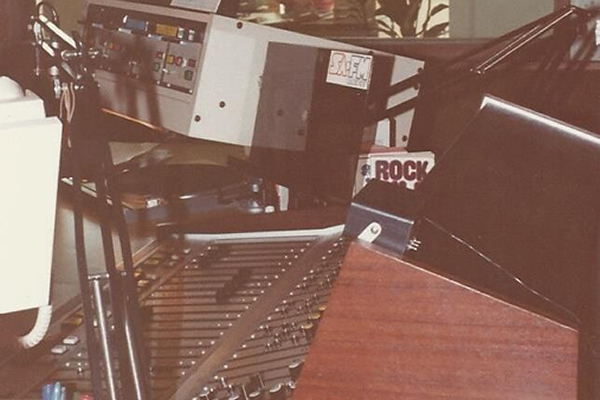
Daryl M: Gosh your memory of events is magnificent. So when did you land at SAFM? How did that come about? How did you feel given that you had such admiration for Paul Thompson and the team at SAFM?
Jim M: By now family was calling. In late 1997 I decided it was time to head home to Adelaide.
Linc Kelly was SAFM Production Manager, and he had recently out of the blue sent me a congratulatory message after I won a U.S. Radio and Production award. So when I arrived in town, not planning to rush into a radio gig, Linc found out and he tracked me down… There were phone messages at my parents house… I was still in ‘having my 10 year sabbatical’ mode.
So by 1998 I was freelancing for a few stations, including SAFM, 5MMM and DMG’s 5AA. I worked with many of the crew from the halcyon days of SAFM, some at DMG by this stage.
I enjoyed the work, loved doing freelance, but Phil Dowse eventually convinced me in 2000 to work full-time at 5MMM as breakfast audio producer. More irony here, 5MMM had been KAFM until 1994, so I was in some ways going back to work for 5KA, but now it was owned and run by Austereo.
One of the things I noticed was how much history there was at SAFM. You know how radio stations periodically throw out their history? SAFM had moved from adult rock to CHR and a lot of stuff from the old brand was seen as irrelevant. I can remember being told one day, just by chance, that the bean counters had decided to cancel the lease on a big industrial storage bay in the suburbs. Urgent rescue was needed. Literally hundreds and hundreds of reels of tape were being thrown into mini skips. I arrived at the storage sheds after doing a 10 hour day of real work on the breakfast show, and spent until very late that evening digging through a mountain of tapes which had already been put in mini skips. For three days I went there after work, I filled up my station wagon with reel to reel boxes.
There were 8 track master reels of many of the original SAFM Skyshow soundtracks. Interviews with music legends, station imaging, promos, stuff that you wouldn’t believe. When 5MMM had moved into the SAFM building it had created a storage issue, and much stuff that they sent off site was forgotten about.
Some of this material I didn’t really go through until this SAFM reunion came about. It sat in boxes at my home, hopefully not deteriorating any more than much already had.
I became known as the go to guy for archival audio. And much of what. I rescued has been used on air again. Usually at short notice, and often only after a vague recollection that ‘I might have that at home’. For years it’s been my wish to spend time going through this audio and to catalogue it.
After 2 years of the early starts I moved into producing commercials with the Creative team at SAFM.
Last year, of course, SCA made the painful decision to say goodbye to the SAFM brand after 34 years. Hit 107 was born. And this year in January SCA moved from SAFM and Austereo’s birthplace at 128 Greenhill Rd Unley, into beautifully constructed new studios on the 13th floor of 70 Franklin Street, Adelaide.
There is further irony here, because our new studios look down on the site of Paul Thompson’s 5KA at 43 Franklin Street. It’s literally outside our reception window, a place where much of the Adelaide radio world centred, where radio in Adelaide evolved in the 1970s and 1980s. So both hit107 and 5MMM are located across the road from where their parents were conceived, you might say. We’ve come back to the family home.
Daryl M: With the 35th Anniversary of SAFM this year, how did it come about that you would create such a magnificently produced audio archive of the history of the station?
Jim M: In early 2015 some of the former SAFM staff decided that there hadn’t been a proper farewell to the station – physically and emotionally. Within a few months of the SAFM call sign being gone from the airwaves, the actual building was now also an eerie floorless shell. Some long time staffers scattered across the industry started a Facebook page and began to push to hold a celebration marking 35 years in September. In particular they felt that this was an appropriate time to celebrate Paul Thompson. After he left Austereo in 95 and built DMG and Nova, with SAFM now the opposition there probably wasn’t much room for PT sentimentality within Austereo. So the theme of “SAFM Reunion – The Paul Thompson Years 1980 – 1995’ was adopted. I wasn’t part of this group doing all of the work because I hadn’t actually worked at SAFM during that period, and I wasn’t even aware it was happening. The process was already well underway and the venue booked when Jodie Cairns, legendary SCA Promotions Manager asked if I could help finding archival audio for an upcoming event. Jodie is well aware of my crazy collecting of radio stuff, and initially thought a few montaged bloopers to play on the night would be a good start.
I was given a ¼ inch reel of tape with some production bloopers and out-takes from around 1981. It sat on my hallstand for weeks while I procrastinated – the event was still months away. But this motivated me to finally try and catalogue all of the SAFM reels I’d been storing from the early 2000s purge, plus more rescued when we moved buildings in January. I started a spreadsheet (too boring to print but click here),and in the end it listed 175 reels of tape. I tried to go through them and digitise small samples where possible, but soon realised that much of the Ampex tape stock had become sticky. In some cases I could spool and loosen sections of the less severely damaged tapes to grab brief bits of audio. But it was very slow going, and I didn’t want to damage any precious memories in the process. So after a while I started to focus less on the source reels, and instead began to go back through my own cassette archives from the 80s and 90s.
It was clear we had a ton of material to choose from. I emailed Carolyn Lee, Jodie Cairns, Jane Ente and others on the SAFM Reunion committee and told them that the bloopers tape wouldn’t play, and many of the blooper bits would need to be explained or set-up. So maybe a general run through some SAFM iconic moments was the go? Soon people were suggesting their ‘must have list’ of audio – Skyshow, Black Thunders, John Vincent, The Morning Zoo, 107 Card cash, so many bits to choose from.
It seemed logical to do it in three 5-year segments, because I reckon that SAFM during that period went through birth, growing pains and right into adulthood. I set about getting audio for 1980 to 1984. The reunion was now only weeks away and I was spending late nights going through boxes of cassettes in my lounge room. These were piling up with the semi-catalogued reel to reel tape boxes and some material I’d burnt to CD years earlier. An interstate holiday was cut short and I spent my last few days of annual leave going through recordings. Looking for those iconic moments, I knew I had them but finding ‘the bit’ on a tape you recorded as a teenager was a slow process. I had to digitise material quickly so I set up 3 cassette decks, each playing into hard drive recorders, even an old HHB analog input CD burner. Some of the recordings for the first year of Double SAFM weren’t originals, as a teenager I’d copied them to recycle cassettes ($1 a week pocket money didn’t buy too much storage) and the copying was sometimes done using machines with wow and flutter or phase issues. So there were technical issues all the way.
With about 2 weeks to go before the event, I finished the first montage. I found some 5MMM audio of SAFM 80s announcer Andrew Peters introducing individual 1980s years, and this seemed like the perfect way to bookmark the eras. So Sid gets a guernsey, along with his actual audio highlights.
The 80 – 84 montage starts with Paul Thompson opening the station as 5 Double SA – FM. Then the slightly evangelical cheesy ‘I hear the music for the first time’ jingle, into SAFM’s first track, Dire Straits ‘Sultans Of Swing’.
You hear a bit of first jock Adrian ‘AJ’ Johnstone’s hesitant first words. Leon Byner doing breakfast. David Day playing a listener’s ‘Music Mix’ triple play. A promo for their first ever major promotion, a car giveaway and album countdown. The original news theme, also based on that first jingle. John Williams, iconic newsreader from 5KA in the 70s to Triple M in the late 90s.
Leon Byner announcing after a few months that he is leaving to be replaced by John Vincent. Vinnie’s original ‘howyagoin’ intro. Their first simulcast – “Tommy”. Then Double SAFM’s first birthday. David ‘Daisy’ Day talks about AJ’s opening night nerves. A promo for INXS performing a 1981 pub gig with The Divynils, after which Andrew Peters suggests it might be worth a look… Very early days for those guys! A promo for the ‘radio swap’ where Double SAFM invited motorists to throw their old AM radios into a garbage truck, to receive a free FM unit.
The station also held a comp for local bands to produce Double SAFM jingles. John Vincent introduced a jingle submitted by his alter ego ‘Ken Noath’. Then you hear the announcement that their first ever car sticker is coming out, and the launch of the 107 Card. In years to come the station’s stickers and 107 card would be seen everywhere. David Day 1982 during one of their 24 Hour Rock Classic marathons. No ads, just big blocks of their music and detailed back announces. Then overnight in July 1982 – we hear a double SA FM jingle, and the following day the same jingle had become 107 SA-FM. The rebrand to their most successful handle was happening, and there are a few examples of the jocks getting their delivery sorted. John Dean, Bill Page, David Day all trying it out. Then a promo demonstrating how big INXS had become in Dec 1982. We jump to 1984, when SAFM became the first FM station in Australia to go number 1. This audio is TV archive and features Keith Conlon from ADS7. Then we hear the first of the 1984 hard hitting Holger Brockman packaging, a “more non stop stereo” sweeper.
Whoa, this was already 6 minutes, and I’d managed to skip an entire year. But so much happened during the launch phase of the new FM station that I felt compelled to focus on the birth and the original Double SA FM. It’s a forgotten link in Adelaide radio history, but I’m sure to the people who worked there, it was unforgettable. It was for me as a listener.
Download Track List Here
Daryl M: Can you tell us about how it was received on the night of the reunion?
Jim M: OK I should point out right here that the venue is fantastic, so it wasn’t due to any quality issues that the audio wasn’t heard. It was due to timing and crowd movement. A few hundred radio people had arrived at the Arkaba Top Room, itself a massive venue during SAFM’s heyday. And they were just starting to soak up the awesome event put on by the organisers, people from across radio groups and also many working nowadays outside radio. So when one of the first big speeches happened with Grant Cameron from Vinnie’s Morning Zoo, everybody stopped and listened eagerly and respectfully as Grant paid tribute to Paul T, to the recently departed David Day and of course to his long time Zoo ‘ringmaster’ John Vincent. Unfortunately at the end of Grant’s speech, he threw to a Bill Page music set instead of introducing the montage. Totally understandable because the running order was a bit fluid. People who had already been standing silent for a while started to resume conversation and head to the bar, in their droves as radio types often do. The audio guy was a bit thrown by the cue and hastily checking his running order to see if we were going to music set or montage. By the time audio happened, the main DJ-ing area and dance floor were empty. Near the bar where monitor speakers weren’t directed, crowd was 6 deep and conversation was in full swing again. It was the 80-84 montage, but nobody knew what it was or could really have heard it if they tried. A decision was made, quite reasonably, to drop the second and third montage. The first had flopped badly.
Sadly, I should have known better. Get a few hundred people together in such a euphoric situation, and unless they are focussed and ready to ingest a 6 minute montage, they will miss it. A couple of people had warned me that bits of it might get lost, and also that people may talk through the whole thing. But those who heard it properly before hand, people who know the history of the station and know that most of this audio hasn’t seen the light of day for 3 decades – they were blown away. I know many great radio people who would have enjoyed hearing their ‘long lost’ work replayed. In the 85-89 and 90 to 95 montages my aim was to showcase as many legends as possible from the huge stable of talent that came through SAFM. I’ve been collecting this stuff for a long time because I knew it was special. I just wish I could have shared it properly with those guys on the night.
A special thanks to Jim Mortimer for not only taking the time to share his story but to allow us to hear this unique historical and at the time, ground breaking audio footage of what was a pivotal time in Australian Radio.
In part 2 we feature SAFM from 1985 – 1989 with some special words from Paul Thompson and Greg Smith.
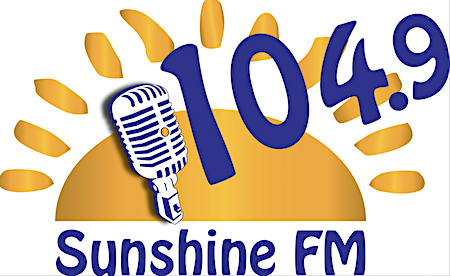


Found this on the net . a great read about a great time ,as a teen in the 80 ‘s it was the station to listen to had a safm jacket t shirt and cap all from the 107 shop in the city and of course a 107 card , as time goes by easy to forget a lot of this so thanks also being going through old tapes to hear stuff recorded from sa fm during the day , grea tif someone made a proper doco about this station during the Paul Thompson years